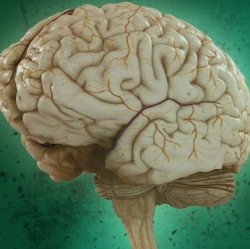
Neuroscientists at the Francis Crick Institute have developed a new technique to map electrical microcircuits in the brain at far more detail than existing techniques, which are limited to tiny sections of the brain (or remain confined to simpler model organisms, like zebrafish).
In the brain, groups of neurons that connect up in microcircuits help us process information about things we see, smell and taste. Knowing how many neurons and other types of cells make up these microcircuits would give scientists a deeper understanding of how the brain computes complex information.
Nanoengineered microelectrodes
The researchers developed a new design called “nanoengineered electroporation microelectrodes” (NEMs). They were able to use an NEM to map out all 250 cells that make up a specific microcircuit in a part of a mouse brain that processes smell (known as the “olfactory bulb glomerulus”) in a horizontal slice of the olfactory bulb — something never before achieved.
To do that, the team created a series of tiny pores (holes) near the end of a micropipette using nano-engineering tools. The new design distributes the electrical current uniformly over a wider area (up to a radius of about 50 micrometers — the size of a typical neural microcircuit), with minimal cell damage.
Seeing 100% of the cells in a brain microcircuit for the first time
Unlike current methods, the team was able to stain up to 100% of the cells in the microcircuit they were investigating, according to Andreas Schaefer, who led the research, which was published in open-access Nature Communications today (Jan. 12, 2018).
“As the brain is made up of repeating units, we can learn a lot about how the brain works as a computational machine by studying it at this [microscopic] level,” he said. “Now that we have a tool of mapping these tiny units, we can start to interfere with specific cell types to see how they directly control behavior and sensory processing.”
The work was conducted in collaboration with researchers at the Max-Planck-Institute for Medical Research in Heidelberg, Heidelberg University, Heidelberg University Hospital, University College London, the MRC National Institute for Medical Research, and Columbia University Medical Center.
